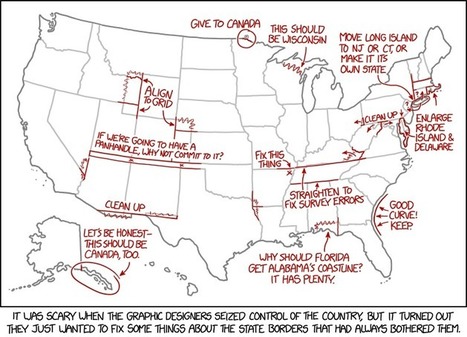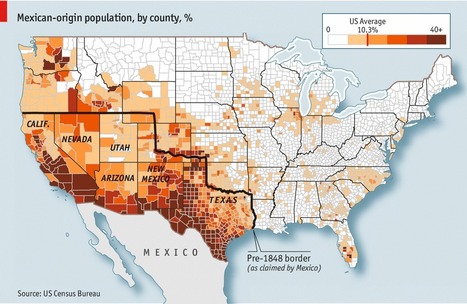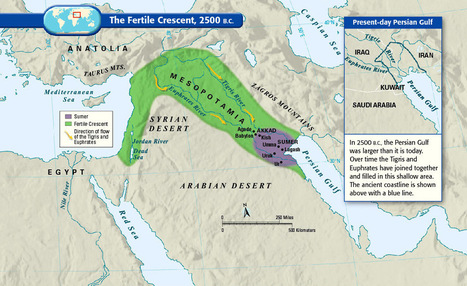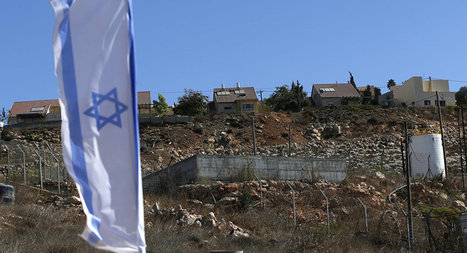Get Started for FREE
Sign up with Facebook Sign up with X
I don't have a Facebook or a X account
 Your new post is loading... Your new post is loading...
 Your new post is loading... Your new post is loading...

Alex Smiga's curator insight,
August 10, 2017 6:51 AM
I say it all the time, culture does not respect boarders.
Nicole Canova's curator insight,
February 9, 2018 8:15 PM
Up until 170 years ago, a large portion of what is now the United States was actually controlled by Mexico. Remarkably, this is still reflected in the ethnic makeup of the population of that area, which covers all or part of 8 states (all of California, Nevada, Utah, Arizona, New Mexico, and Texas, and part of Colorado and Wyoming). Political borders may determine citizenship, but they are by no means a hard division of ethnicity or culture.

Alex Vielman's curator insight,
November 23, 2015 3:17 PM
Maps like the ones posted in this article, really helps people to understand and break down deeply of understanding the entire region as a whole. Visualization is very important in geography when trying to understand the region people are talking about. this region as goes down to the Mesopotamia Era. It is important to know, how the culture was in this area to how it differentiated during the Ottoman Empire. During the first couple of maps, we can begin to see the division of the entire region. As you go on, we begin to notice the divisions between people, religion, language between states and in-states. There is so much information to know about the Middle East region and it may be even harder to understand due to the tons of changes and separations, but it is important to understand these divisions like the Sunni's and the Shi'ites in order to fully explain the development and the current situations that are occurring in this region as we speak. 
Matt Ramsdell's curator insight,
December 7, 2015 5:18 PM
These 40 maps are a very interesting way of showing how people have traveled around and moved about the Earth from the time of the fertile crescent era to the people of today. It shows us the paths that people have taken to move to a new location. How they used the Meditteranean Sea to move from one side to the other. It also shows how the Tigris and Euphrates came together to form a smaller area of the Persian gulf. This led to smalled economic growth because now there is less land for imports and exports. 
Kelvis Hernandez's curator insight,
December 12, 2018 10:49 PM
Being able to explain any region in just 40 maps is a very bold claim. While no one would be able to do this Vox was able to make a very interesting set of historically, culturally, and politically themed visualizations of this continuously changing part of the world. Some maps show the borders of an empire past, others discuss the many ethnic groups that call the region their home, and yet another discusses the importance of oil and who has it. |
David Stiger's curator insight,
October 31, 2018 11:06 AM
While religion plays a crucial role in the Israeli-Palestinian conflict, it is important to note that it is not the central issue; disputes over land seem to be the bedrock of the conflict. It is also worth noting that this conflict only began in 1948, and that at several points in history, all three Abrahamic faiths peacefully coexisted and shared Jerusalem. It is essential to understand how sacred Jerusalem (on the border of the West Bank) is to both sides of the conflict and how both parties feel they have a divinely sanctioned right to the territory. Examining the history of this conflict illustrates how things simply spiraled out of control making compromise, specifically the means to share this special land, nearly impossible. The Zionist movement in relation to Holocaust, the Jewish War for Independence in 1949, the Six-Day War, and the First and Second Intifadas have culminated in two sides unwilling to work together in order to reach a lasting, mutually beneficial compromise. This deal would be in the form of an internationally recognized two-state solution, with Jerusalem serving as a shared city. Unfortunately, a large portion of Israelis are tired of the relentless conflict causing them to become apathetic. Having the upper-hand, Israel now lacks the collective willpower to implement change. On the other side are the Palestinians, who possess a sense of national identity but are blocked at every turn from establishing their own country. The rage and frustration in Palestine has pushed organizations like Hamas to employ terror tactics - resulting in Israelis to fight back harder. This process of bloodshed creates a viscous cycle that is already highly complicated due to geography. A salient geopolitical point here is the unhindered spread and development of Israeli settlements on Palestinian land. To me, this is where Israel stepped way over the line of morality and self-defense. They are no longer defenders but are now invaders, conquerors, and perhaps even colonizers. It is no wonder Palestinians are enraged. The physical act of rivals occupying land unjustly has become a humiliating usurpation of sacred rights. Although this would be extremely difficult, the Israeli government needs to pull its people out of the settlements and give all the land back to Palestine. In exchange, Hamas needs to be disowned and disbanded. Palestine should not have a military for 15 years, allowing Israel to manage its security. Jerusalem should be split in half and as a gesture of goodwill, Israel should give up a strip of land to Palestine in order to connect Gaza and the West Bank.

Brian Wilk's curator insight,
March 22, 2015 1:02 PM
This story of the Palestinians, Israel, Arabs, and Jews has its roots in Germany at the hands of one of the worst dictators the world has ever seen, Adolf Hitler. His ethnic cleansing of Jews via torture, the gas chamber, and starvation, is one of the bleakest times in recorded humanity. The remaining Jews were a people without a land and so it was agreed that Israel would be formed to provide a safe haven. However the land has been disputed, fought over, and the borders changed so many times that it no longer resembles the initial attempt to provide a refuge for the Jews. Ironically, 700,000 Palestinians had been displaced initially and now number 7,000,000 according to the article; all of them designated as refugees. There is no solve for the problems between the Arabs, Jews, Palestinians and Israel as too much blood has been spilled, and forgiveness is a forgotten word. How do you apologize or forgive for generations of bloodshed, displaced families, borders that constantly change, and religions that contradict one another? I'm glad that I wake every day in the USA. We have our own issues to resolve, but nothing approaches the contradictions and paradoxes this area of the world must live with every day. 
Claire Law's curator insight,
April 26, 2015 2:07 AM
A good refresher for teachers and a start for students 
Michael Amberg's curator insight,
May 26, 2015 11:25 PM
Its interesting to see another side to the story and what barriers are now in place from the two opposing cultures. |














